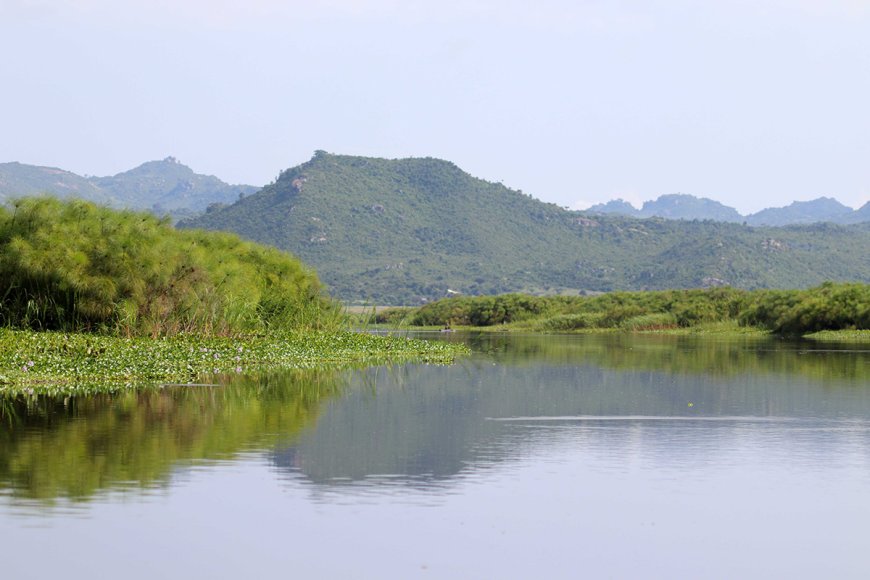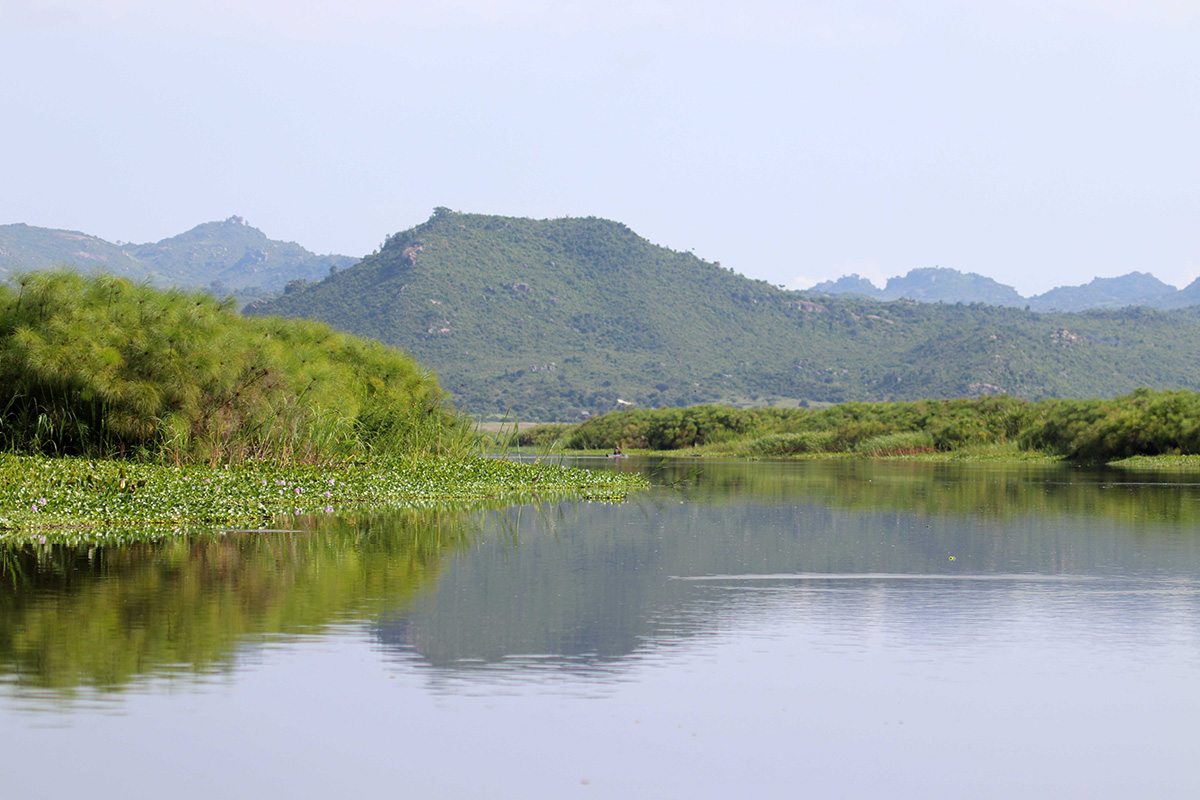Assessing the state of freshwater biodiversity monitoring: A global perspective
Assessing the state of freshwater biodiversity monitoring: A global perspective IUCN

Sustainable Development Goals and Freshwater Biodiversity Monitoring

Introduction
A study conducted by the IUCN SSC Global Freshwater Macroinvertebrate Sampling Protocols Task Force (GLOSAM), led by Drs. Simaika (IHE Delft) and Andreas Bruder (SUSPI), reviewed the current state of freshwater biodiversity monitoring programs, focusing on the utilization of benthic macroinvertebrates as indicators.
Why Benthic Macroinvertebrates?
Benthic macroinvertebrates are excellent indicators of localized conditions due to their limited movement or sessile nature. They reflect a range of trophic levels and pollution tolerances, and serve as a primary food source for many fish. Additionally, they are abundant in most streams and relatively easy to sample and identify, making them ideal for detecting degraded conditions.
Bioassessment and Biodiversity Monitoring
Benthic macroinvertebrate protocols can be used for both bioassessment and biodiversity monitoring. While there is overlap between the two, bioassessments evaluate the degradation status and condition of a waterbody, while biodiversity monitoring aims to document the full variety of biota in ecosystems. These two approaches have traditionally been carried out separately.
Survey Findings
To gain insights into the adoption of freshwater benthic macroinvertebrate protocols, the team conducted a comprehensive survey from November 2022 to May 2023. Responses were collected from 110 individuals representing 67 countries. The findings revealed a notable gap in biodiversity monitoring efforts, particularly at the national and sub-national levels. While bioassessment programs were more prevalent, systematic monitoring of biodiversity across lakes, rivers, and artificial waterbodies was lacking.
Gaps and Challenges
The Task Force identified 20 distinct gaps and challenges affecting the harmonization of biodiversity monitoring and bioassessment protocols, which they grouped into five key categories: field sampling, sample processing and identification, metrics and indices, assessment methodologies, and miscellaneous hurdles. These challenges include the need for sampling across different water bodies, habitats, and seasons for biodiversity monitoring, as well as the lack of standardized protocols and publicly available data.
Lack of Harmonization
The lack of harmonization emerged as a significant barrier, impeding collaboration and hindering the comparability of data across regions. IUCN SSC GLOSAM’s next step is to address this issue by developing standardized and harmonized protocols. The Task Force aims to improve available datasets for analyzing spatial and temporal trends in species distributions and population sizes to better understand the impacts of human activities on freshwater ecosystems and their macroinvertebrate inhabitants.
Conclusion
Dr. Simaika concludes: “Efforts to monitor and assess the health of freshwater ecosystems are critical for conservation and sustainable management. By addressing the identified gaps and challenges and promoting global harmonization, we can enhance the effectiveness of biodiversity monitoring programs and ensure the long-term resilience of freshwater ecosystems. Collaborative initiatives such as GLOSAM provide a pathway towards achieving these goals and safeguarding the invaluable biodiversity found within freshwater habitats.”
SDGs, Targets, and Indicators
1. Which SDGs are addressed or connected to the issues highlighted in the article?
- SDG 6: Clean Water and Sanitation
- SDG 14: Life Below Water
- SDG 15: Life on Land
2. What specific targets under those SDGs can be identified based on the article’s content?
- SDG 6.6: By 2020, protect and restore water-related ecosystems, including mountains, forests, wetlands, rivers, aquifers, and lakes.
- SDG 14.1: By 2025, prevent and significantly reduce marine pollution of all kinds, particularly from land-based activities, including marine debris and nutrient pollution.
- SDG 15.1: By 2020, ensure the conservation, restoration, and sustainable use of terrestrial and inland freshwater ecosystems and their services, in particular forests, wetlands, mountains, and drylands, in line with obligations under international agreements.
3. Are there any indicators mentioned or implied in the article that can be used to measure progress towards the identified targets?
- Indicator for SDG 6.6: Proportion of water bodies with good ambient water quality.
- Indicator for SDG 14.1: Marine pollution index.
- Indicator for SDG 15.1: Coverage by protected areas of important sites for freshwater biodiversity.
Table: SDGs, Targets and Indicators
| SDGs | Targets | Indicators |
|---|---|---|
| SDG 6: Clean Water and Sanitation | Target 6.6: By 2020, protect and restore water-related ecosystems, including mountains, forests, wetlands, rivers, aquifers, and lakes. | Proportion of water bodies with good ambient water quality. |
| SDG 14: Life Below Water | Target 14.1: By 2025, prevent and significantly reduce marine pollution of all kinds, particularly from land-based activities, including marine debris and nutrient pollution. | Marine pollution index. |
| SDG 15: Life on Land | Target 15.1: By 2020, ensure the conservation, restoration, and sustainable use of terrestrial and inland freshwater ecosystems and their services, in particular forests, wetlands, mountains, and drylands, in line with obligations under international agreements. | Coverage by protected areas of important sites for freshwater biodiversity. |
The article addresses the issues related to freshwater biodiversity monitoring and the utilization of benthic macroinvertebrates as indicators. These issues are connected to SDG 6 (Clean Water and Sanitation), SDG 14 (Life Below Water), and SDG 15 (Life on Land).
Based on the article’s content, specific targets under these SDGs can be identified. For SDG 6, the target is to protect and restore water-related ecosystems, including mountains, forests, wetlands, rivers, aquifers, and lakes. For SDG 14, the target is to prevent and significantly reduce marine pollution of all kinds, particularly from land-based activities. And for SDG 15, the target is to ensure the conservation, restoration, and sustainable use of terrestrial and inland freshwater ecosystems and their services.
The article mentions or implies indicators that can be used to measure progress towards these targets. For SDG 6.6, the indicator is the proportion of water bodies with good ambient water quality. For SDG 14.1, the indicator is the marine pollution index. And for SDG 15.1, the indicator is the coverage by protected areas of important sites for freshwater biodiversity.
Behold! This splendid article springs forth from the wellspring of knowledge, shaped by a wondrous proprietary AI technology that delved into a vast ocean of data, illuminating the path towards the Sustainable Development Goals. Remember that all rights are reserved by SDG Investors LLC, empowering us to champion progress together.
Source: iucn.org

Join us, as fellow seekers of change, on a transformative journey at https://sdgtalks.ai/welcome, where you can become a member and actively contribute to shaping a brighter future.







